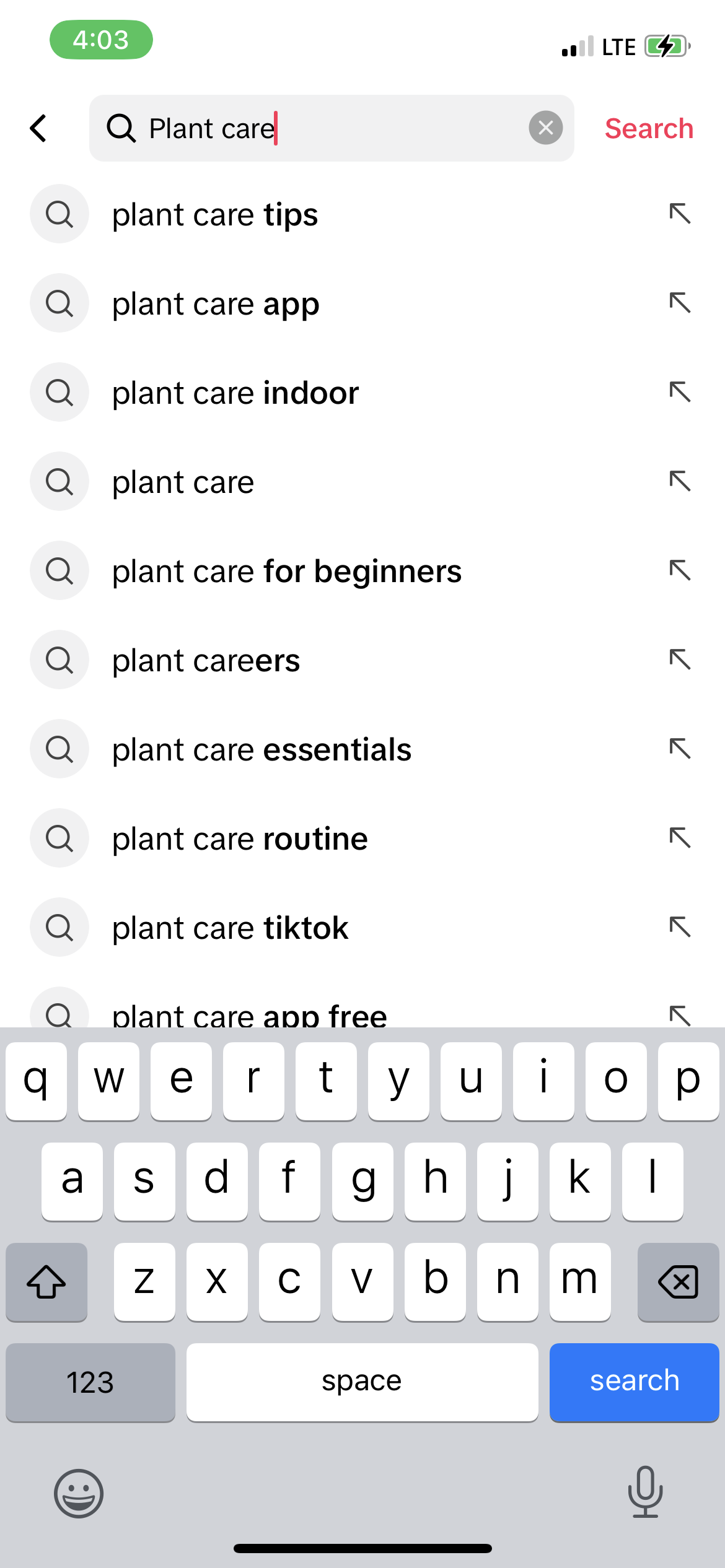Unless you’ve been living under a rock, you’ve likely heard of TikTok—the short-form video platform that has been the basis of a number of viral moments over the last couple of years.
If your brand is on TikTok, you’re probably aiming to create your own viral moment. A combination of a well-thought-out strategy, posting on TikTok at the right times and mastering TikTok SEO can be a huge help in your endeavor.
Learn more about what TikTok SEO means, ranking factors to keep in mind for your videos and how to create content that will rank well on TikTok.
Let’s get started.
What is TikTok SEO?
SEO stands for search engine optimization. This is often used in reference to Google and the web pages that appear in search results. For example, this article is an example of a piece of content optimized for traditional SEO. You may have found it by searching for “TikTok SEO” on Google or Bing.
TikTok SEO is similar—but it takes place on TikTok. TikTok SEO is the practice of optimizing your video content (rather than your website content) for TikTok’s search engine, algorithm and “For You Page” (rather than for a search engine results page or SERP).
TikTok is becoming more and more popular for search. In fact, 40% of Gen Z will use TikTok and Instagram for search instead of going to Google. So if someone is searching for, say, a local place to get lunch, and you’re running TikTok for a restaurant or lunch spot, you want your videos to appear first. This is where TikTok SEO comes in.
TikTok SEO ranking factors
Every search engine has its own factors that help content rank. Just like every social media platform has an algorithm that helps put relevant content in front of each user. With TikTok, they’re one in the same.
There’s been a lot of buzz around the TikTok algorithm due to its ability to place hyper-relevant content in their users’ feeds (called the For You Page or FYP for short). These factors also play a part in the content shown in search results.
There are three main factors used in determining which videos are shown to which users: user interactions, video information and device/account settings.
User interactions
User interactions refer to the actions each user has taken on videos they’ve already watched. This information is saved to help improve the content shown to each viewer, creating a better user experience.
Some of these interactions include:
- Likes
- Shares
- Follows
- Comments
- Completions
- Skips
The algorithm pays attention to these actions to get an idea of the types of content each user likes and adjusts the FYP accordingly.
Video information
The information accompanying each video also helps the algorithm figure out what videos to show. This includes captions, hashtags, sound clips and other identifying factors on the videos. This will be one of the most important parts of TikTok SEO and ensuring your videos are shown when someone searches for relevant keywords or hashtags.
Device and account settings
And finally, your own device and account settings also play a part. Information like the type of device you’re using, your location and your language preferences will impact the content shown on your FYP.
5 TikTok SEO tips to boost your content’s reach
Knowing what the algorithm looks for is one thing. Knowing how to create content that ranks is another. Keep these five tips in mind when planning, creating and even publishing your TikTok video content to increase your chances of showing up in search and the feed.
Conduct TikTok keyword research
Our content team conducts keyword research to pinpoint which web pages and blog posts make the most sense to create for our audience. Your social media team needs to do the same with your TikTok.
Some traditional SEO tools can be a great starting point. Tools like SEMrush and Ahrefs can help you get a general idea of what your target audience searches for on sites like Google to learn more about your industry or business.
You can also take advantage of TikTok’s Keyword Insights tool. This tool can help you find keywords, view relevant videos/ads and discover keyword phrases you can use in your captions.
Another great option is to use the TikTok app and its search engine yourself. Let’s say you’re managing the TikTok account for an online plant shop and care company. You might start with the basics, conducting a search on the TikTok app for “plant care.” TikTok’s search functionality will display a list of auto-populated results that other users are searching for:

Each of the auto-populated results could be an idea for a video or series of videos. You can also narrow down results even more by adding letters after your initial keyword request. Type out:
- Plant care a
- Plant care b
- Plant care c
And so on and so forth to see additional video ideas. Use the traditional SEO tools to find even more starting points for keywords you can input into TikTok’s search function.
Create high-quality TikTok content
The next step is to create high-quality TikTok videos. You also need to create content consistently. TikTok recommends publishing videos 1-4 times per day, especially when you’re testing out new content types to see what your audience likes best. Posting more content also increases your chances of going viral.
Some tips for creating TikTok content that your audience will enjoy are:
- Keep your videos around 30 seconds (internal data from TikTok in 2021 said 21-34 seconds is best)
- Use TikTok’s editing features so the video feels native and familiar
- Incorporate trending sound clips and memes into your content
- Find a subculture your content and brand fit into
- Experiment with different types of videos
Pay attention to the videos that do well so you can try to replicate that success. Eventually, you should land on a formula that works for your brand and help you get more followers.
Leverage trending challenges and hashtags
Another key in creating high-quality and engaging content that TikTok users want to see is to leverage trending challenges and hashtags. TikTok challenges have been a staple since the app’s beginning. Many of the top TikTokers earned their place by starting and participating in challenges, and your brand can do the same.
Brand challenges like wet n wild’s #BiggerIsBetter challenge or Scotts #DoTheScottsSlide challenge have been great ways for these businesses to make a splash on the app and reach a large audience. Plus, highly-used hashtags can appear in search results, improving your SEO ranking.
Whether you decide to try to create your own challenge or hop on existing challenges that make sense for your brand, it’s a good idea to put this tactic into your TikTok marketing strategy.
Use your keywords in your captions and videos
Include your video’s keyword(s) in your caption, hashtags and any on-screen text you add to your video. This can help solidify your video’s relevancy to your topic, improving your chances at appearing in search results.
However, your captions should still be engaging. Don’t keyword stuff. Instead, strategically place your keyword within a caption that helps tell more of a story for your video. Ask questions and try to get your viewers to leave comments. You can then use these comments to make more video content. Consider incorporating some of the keyword phrases you discovered using the Keyword Insights tool.
In addition, you should include 3-5 hashtags in your TikTok caption for maximum results. And at least one of those hashtags should include your keyword verbatim to help your video rank. Find relevant hashtags by looking to competitor accounts or influencers in your niche. You can also try out the TikTok Hashtags tool to generate a few top hashtag options.
And finally, if you include on-screen text in your video (one of the many editing features available within the TikTok app), make sure at least one of your captions or text snippets includes your keyword. Using on-screen text or captions helps give the algorithm a better idea of what your video is about, but also helps with accessibility.
Engage with the TikTok community
Finally, engage with your audience. Videos from active and legitimate accounts are much more likely to rank than inactive accounts that focus only on publishing and promoting.
There are several different ways to engage with your audience on TikTok—and encourage them to interact with your brand account as well.
One option is to go live. Live streaming is wildly popular on TikTok and can be a great way to showcase how things work behind the scenes for your followers and customers. Go live while you create or package products. Hold an AMA or FAQ session to answer follower questions about your products or services. Talk to people who join and comment on your live video to help them feel involved.
Another option is to use your regular video content to encourage your viewers to leave comments, like your video and share it with their own friends or followers. TikTok comments can be leveraged in future content, so if nothing else, ask questions, poll your audience and find other ways to get viewers to leave their own comments.
You can then use those comments to create a new video. This type of content feels natural to your audience and can encourage them to cycle through past videos to see where the comments came from. This increases your views, showing TikTok that you have a popular account and people want to see your videos.
Finally, consider collaborating with TikTok influencers. Find popular TikTokers in your industry and reach out to them about a partnership. They can create content promoting your brand and sending people to your account, growing your following and proving you’re a credible resource.
Your community on TikTok is going to be key for growing your account and creating high-ranking videos. For every minute you spend creating content, you should spend another interacting with others on TikTok.
Start ranking with these TikTok SEO tips
Ranking well on TikTok starts well before you create your video. Implement SEO tactics into your planning, creation and publication phases to maximize your reach on the platform. Then keep an eye on your TikTok analytics to ensure you’re seeing the results you’re looking for.

